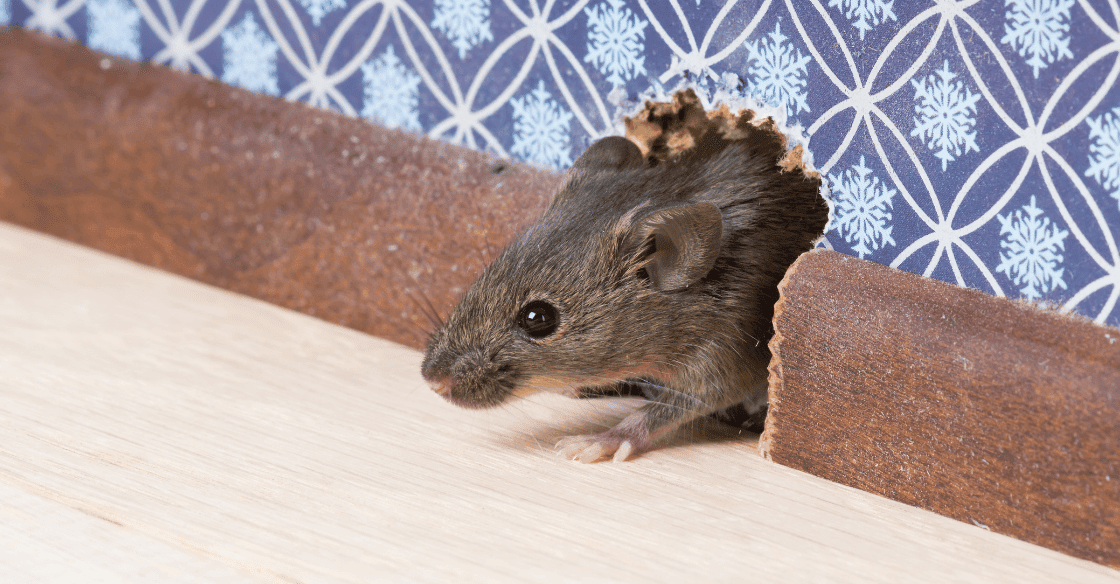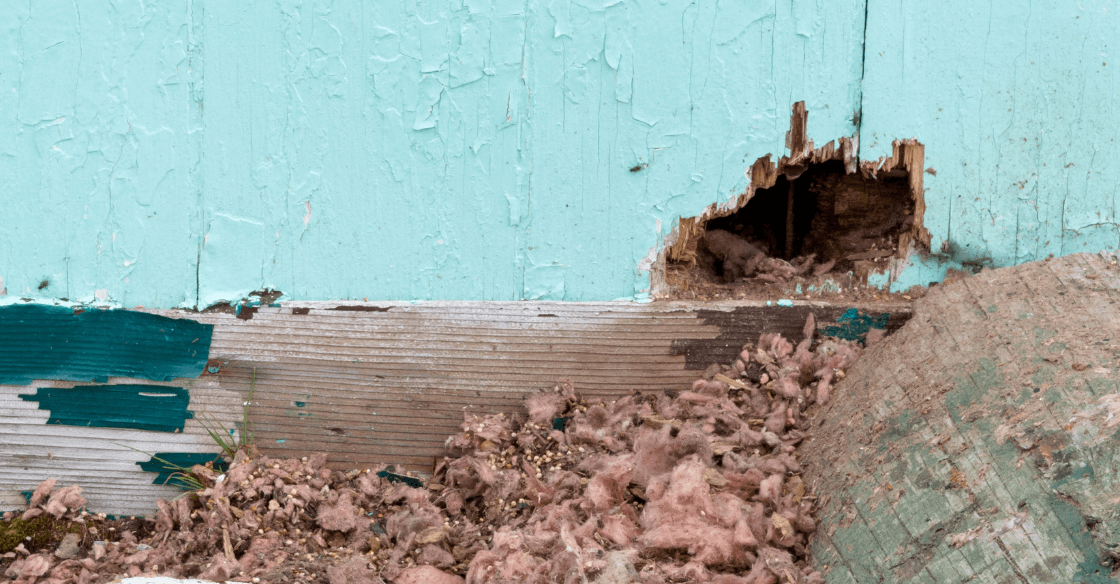No one likes to think of rodents and other pests scurrying about their home! Rats and other rodents will settle in as unwelcome guests in your home if you allow them the opportunity. This article will help you figure out how to spot rodent entry points.
According to the CDC, they don’t only carry disease, but they can also cause extensive damage to your property and home.
As with most things in life, the best defense is a good offense. By taking appropriate precautions, you can keep rodents from even coming into your home in the first place. Rodents in the attic and other parts of the house are something every homeowner dreads. By undertaking appropriate rodent proofing, you can mitigate the threat.
Check Common Rat Entry Points
The best way to find potential entry points is to do a thorough walkthrough of your home and the exterior perimeter. While you inspect your property, pay special attention to these common rat entry points:
- Cracks in your walls and baseboards – Take a close look at the exterior and interior of your house to check for potential entry points. If you spot smaller holes, fill them with caulk. Then, use a combination of steel wool and waterproof sealant to close larger entry points.
- Air vents and ducts – Vents are a critical part of your HVAC system, but they can also be a highway for unwanted rodents! Make sure that holes and gaps around vents are properly sealed, and double-check that your vents are covered securely with metal screening.
- Holes in the roof – If you suspect rodents in the attic, the first place to look for entry points is on the roof. Rodents can gain entry via even the smallest holes, so it’s essential to check your roof thoroughly. If you identify gaps or holes, close them up with a waterproof sealant.
- Dirty or open-top chimnies – Much like your roof, the chimney can be an easy target for rodents looking for food and warmth in your home. Have your chimney regularly cleaned to ensure no rodent nests are there, and make sure you have a chimney grate or cap installed to protect the opening.
- Small holes drilled for wiring – Check for gaps and space around points where wiring lines enter your home.
- Roofs and gutters – Look for torn roof intersections, rafters, or vents. Check for signs of an opening in the gables and eaves.
Don’t leave any inch of your home unchecked. Hidden closet corners and forgotten cabinets provide rodents an easy way to enter your home unnoticed. Mice can squeeze through openings as small as 1/4” wide, so you must be diligent with your walkthrough.
Look for Clues Close to an Entry Point
The following signs of rodent activity are commonly found near or around rat entry points.
Scratches or Bite Marks
Scratches and bite marks around a hole are a clear sign that it’s being used as an entry point for rodents.
Grease Marks
Rodents secrete oils that get left behind on surfaces that they walk across frequently. If you notice an abundance of grease marks in a particular area, you are likely close to an entry point.
Tracks
Rodents leave behind tiny footprints, but you may not be able to see them unless the area is dusty. If you spot tracks and determine their direction, you can follow them to find rat entry points.
How to Seal Off Rat Entry Points
There are multiple ways to seal off rat entry points, depending on where they’re located.
For example, you can seal gaps under doors with new weatherstripping, whereas caulking is better for creating an airtight seal in wall cracks. You can also use steel wool in holes that need to remain open for wiring since rodents cannot chew through steel wool.
Even if you know the rodents are only entering through one specific hole, you should seal all potential mice entry points. Otherwise, the rodents will keep finding new holes that grant access to your home.
If you have an infestation on your hands, the first thing you’ll want to do is take away any potential food and water sources and lay down traps. Due to the dangers of rat poison, traps are usually a better way to deal with infestations.
For maximum peace of mind, turn to professionals to rodent-proof your house and take care of rodent waste cleanup. The experts at Attic Projets can help you with everything from sealing up tricky entry points to cleaning up the aftermath of an infestation. Give their team a call today for a free inspection.
Rodent Proof Your Home with Attic Projects
The issues listed above are just the tip of the iceberg. There can be many ways for rodents to enter your home, so your best bet is to have an attic and crawl space expert come out and do a careful examination to identify any trouble spots.
Rodents and other pests have strong teeth that can gnaw and chew through strong materials, including pipes, stone, cement, plastic, and even bricks.
Our professionals know what to look out for and how to mitigate your problem areas best. If you have rodents in your attic or want to ensure your rodent proofing is up to date and working correctly, you should contact us today. We are here to help, and we look forward to making your home as safe and secure as possible!
Recommended Article: How do Exterminators get Rid of Rats in Attic





